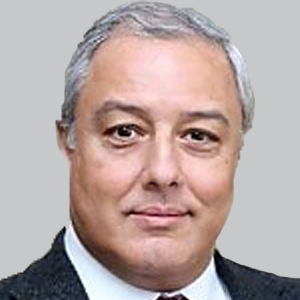News
Article
FDA Clears AI-Powered Brain MRI Software Pixyl.Neuro
Author(s):
Pixyl.Neuro, a CE-marked medical device, is designed to be integrated into the radiology workflow, providing clinicians with diagnostic support of neuroinflammatory and neurodegenerative disorders.
Lotfi Hacein-Bey, MD

According to an announcement from Pixyl, the FDA has granted 510(k) clearance to Pixyl.Neuro, an artificial intelligence (AI)-generated medical technology geared to detect anomalies and changes in brain MR images for neuroinflammatory and neurodegenerative disorders.1
"AI-driven MRI analysis opens the possibility of accessing previously unavailable clinically-relevant information to reinforce radiology workflows, especially in the context of neurological disorders,” Lotfi Hacein-Bey, chief of division of neuroradiology at UC Davis, said in a statement.1 "With disease modifying treatments for MS and now Alzheimer's Disease, it is more important than ever to highlight activity and monitor disease evolution."
Pixyl.Neuro, designed to improve detection and accelerate MRI reading time, has been used in more than 12 countries across Europe, North America, and Africa, prior to the approval. Using proprietary AI algorithms combined with Pixyl’s computing infrastructure, the software enables quick analysis in less than 5 minutes. Additionally, Pixyl.Neuro has received CE-mark class IIa certification in the European Union under the new Medical Device Regulations.
Hacein-Bey added, "Pixyl's FDA approval holds great promise for supporting the management of neurodegenerative and neuroinflammatory disorders. We chose Pixyl to answer our routine practice needs based on their track-record of delivering high-quality brain MRI solutions. I am delighted to partner with Pixyl and I look forward to the benefits it will bring to our radiology workflow and patient care."1
The AI-powered technology has been tested in several real-world conditions, including a 2022 study on patients with post-traumatic injury. Published in Frontiers in Neurology, the trial assesses the performance of an automated atlas-based quantification procedure (AQP) against manual delineation in realistic TBI phantoms. To account for the high dependence on diffused weighted imaging (DWI) on scanning equipment and acquisition protocol, the study implemented a quality control procedure that was deployed on the Pixyl research platform.2
All told, findings from the study showed no statistical difference in Dice similarity coefficient, precision, and brain lesion volumes between the AQP, the rater consensus, and the ground truth lesion delineations, supporting the feasibility of this approach. The intra-class correlation coefficient between AQP and manual delineation was 0.70 in realistic phantoms and 0.92 in patients with TBI. Currently, this approach is being tested in a large cohort of patients enrolled in the multicenter OxyTC trial (NCT02754063) to determine whether the quantification of brain lesion volume as well as type and location play a role in the neurologic outcome after severe TBI.
"Pixyl's FDA approval holds great promise for supporting the management of neurodegenerative and neuroinflammatory disorders,” Hacein-Bey continued.1 "We chose Pixyl to answer our routine practice needs based on their track-record of delivering high-quality brain MRI solutions. I am delighted to partner with Pixyl and I look forward to the benefits it will bring to our radiology workflow and patient care."




